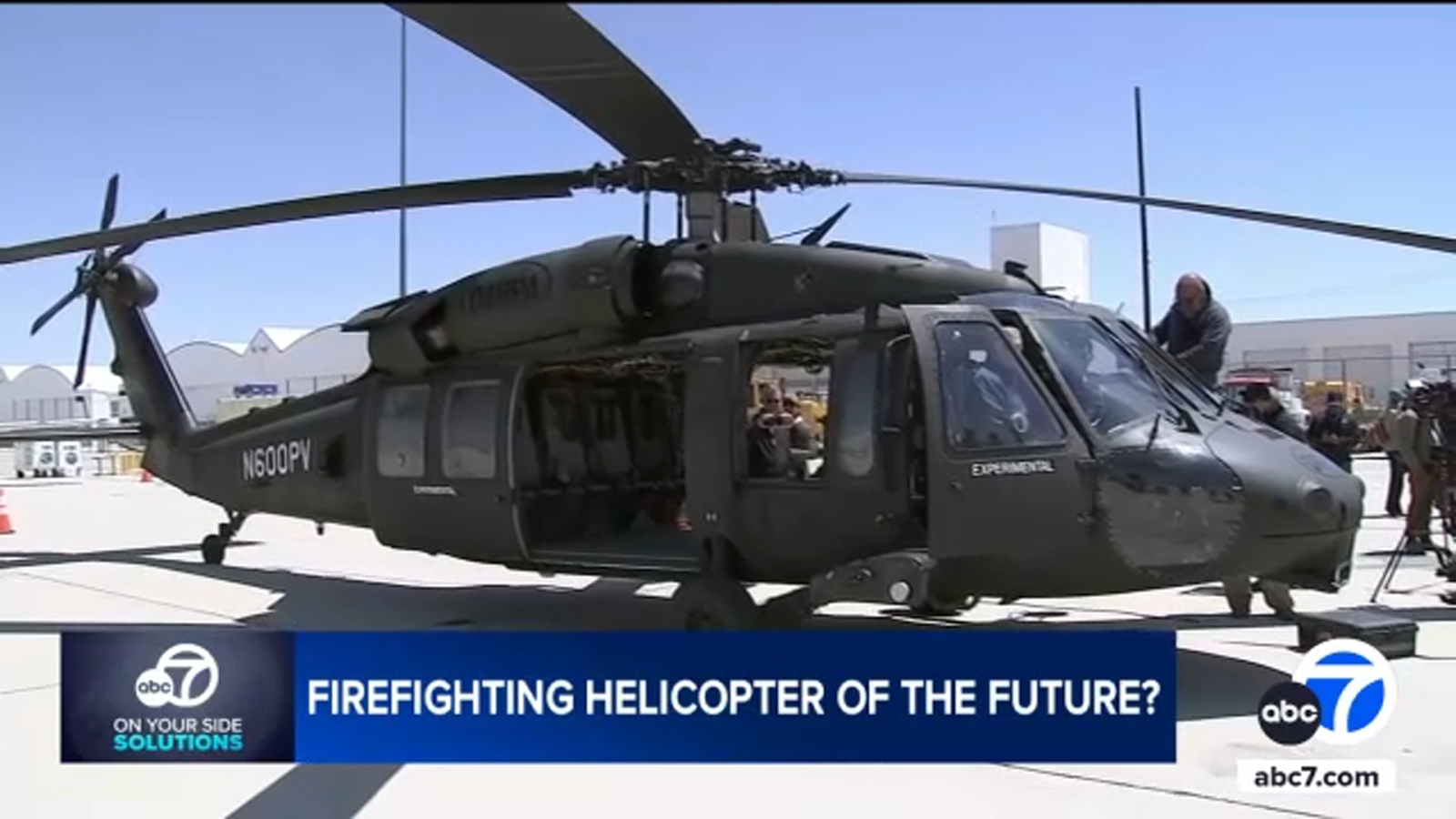Improving Wildfire Response: The Role Of Autonomous Firefighting Technology

Welcome to your ultimate source for breaking news, trending updates, and in-depth stories from around the world. Whether it's politics, technology, entertainment, sports, or lifestyle, we bring you real-time updates that keep you informed and ahead of the curve.
Our team works tirelessly to ensure you never miss a moment. From the latest developments in global events to the most talked-about topics on social media, our news platform is designed to deliver accurate and timely information, all in one place.
Stay in the know and join thousands of readers who trust us for reliable, up-to-date content. Explore our expertly curated articles and dive deeper into the stories that matter to you. Visit Best Website now and be part of the conversation. Don't miss out on the headlines that shape our world!
Table of Contents
Improving Wildfire Response: The Role of Autonomous Firefighting Technology
Wildfires are becoming increasingly frequent and devastating, posing a significant threat to lives, property, and ecosystems worldwide. Traditional firefighting methods are often slow, dangerous, and insufficient to combat the rapid spread of large-scale blazes. Fortunately, advancements in autonomous technology are offering promising solutions to improve wildfire response and mitigation efforts. This article explores the exciting role of autonomous firefighting technology in shaping the future of wildfire management.
Autonomous Drones: Eyes in the Sky and First Responders
One of the most significant advancements in wildfire response is the deployment of autonomous drones. These unmanned aerial vehicles (UAVs) equipped with advanced sensors and AI can provide real-time surveillance of fire perimeters, identifying hotspots and predicting fire spread with unprecedented accuracy. This information is crucial for firefighters on the ground, allowing them to strategically allocate resources and prioritize containment efforts.
Beyond surveillance, autonomous drones are being equipped with firefighting capabilities. Some models can drop water or fire retardant, providing a rapid initial response before ground crews arrive. This early intervention can be critical in containing smaller fires before they escalate into major conflagrations. The use of drones also significantly reduces the risks to human firefighters, minimizing exposure to hazardous conditions.
Autonomous Ground Vehicles: Tackling the Terrain
While drones excel in aerial surveillance and initial response, autonomous ground vehicles (AGVs) are playing an increasingly crucial role in tackling the challenging terrain often associated with wildfires. These robots can navigate rough landscapes, carrying heavy equipment, and deploying fire suppression systems in hard-to-reach areas.
AGVs can be equipped with various tools, including water cannons, hoses, and even specialized equipment for creating firebreaks. Their autonomous operation allows for continuous work without the need for constant human supervision, increasing efficiency and reducing fatigue for human teams. This is particularly beneficial during long and arduous firefighting operations.
AI and Machine Learning: Predicting and Preventing Wildfires
Beyond the deployment of autonomous robots, artificial intelligence (AI) and machine learning (ML) are revolutionizing wildfire prediction and prevention. By analyzing vast datasets encompassing weather patterns, vegetation density, and historical fire data, AI algorithms can identify high-risk areas and predict the likelihood of future wildfires with greater accuracy than traditional methods.
This predictive capability allows for proactive measures, such as controlled burns and strategic resource allocation, to mitigate the risk of wildfires before they even start. Furthermore, AI can optimize firefighting strategies in real-time, adapting to changing conditions and maximizing the effectiveness of human and autonomous resources.
Challenges and Future Directions
Despite the significant advancements, the widespread adoption of autonomous firefighting technology faces several challenges. These include the need for robust communication networks in remote areas, addressing regulatory hurdles, and ensuring the safe integration of autonomous systems into complex firefighting operations.
Future research and development will focus on improving the autonomy, efficiency, and capabilities of these systems. This includes enhancing sensor technology, developing more resilient robots capable of withstanding extreme conditions, and refining AI algorithms to achieve even greater accuracy in prediction and response. The integration of various autonomous systems, creating a collaborative network for enhanced wildfire management, is also a key focus.
Conclusion: A Collaborative Future
Autonomous firefighting technology isn't meant to replace human firefighters; rather, it's designed to enhance their capabilities and improve safety. By providing real-time information, augmenting human efforts, and enabling proactive prevention, these technologies are playing a vital role in improving wildfire response. As technology continues to evolve, we can expect even more innovative solutions to emerge, creating a safer and more resilient future in the face of increasingly challenging wildfire seasons. Investing in and developing this technology is crucial for protecting our communities and preserving our natural resources.

Thank you for visiting our website, your trusted source for the latest updates and in-depth coverage on Improving Wildfire Response: The Role Of Autonomous Firefighting Technology. We're committed to keeping you informed with timely and accurate information to meet your curiosity and needs.
If you have any questions, suggestions, or feedback, we'd love to hear from you. Your insights are valuable to us and help us improve to serve you better. Feel free to reach out through our contact page.
Don't forget to bookmark our website and check back regularly for the latest headlines and trending topics. See you next time, and thank you for being part of our growing community!
Featured Posts
-
 Cleveland Browns Rookie Shedeur Sanders Assigned Jersey Number 12
May 08, 2025
Cleveland Browns Rookie Shedeur Sanders Assigned Jersey Number 12
May 08, 2025 -
 Leody Taveras On Mariners Move What The Outfielder Had To Say
May 08, 2025
Leody Taveras On Mariners Move What The Outfielder Had To Say
May 08, 2025 -
 Leody Taveras Trade Mariners Add Speed And Defense To Lineup
May 08, 2025
Leody Taveras Trade Mariners Add Speed And Defense To Lineup
May 08, 2025 -
 Hill Ranks His Top Five Qbs Tua Left Off The List
May 08, 2025
Hill Ranks His Top Five Qbs Tua Left Off The List
May 08, 2025 -
 Road To Club World Cup Lafc And Club America Face Off
May 08, 2025
Road To Club World Cup Lafc And Club America Face Off
May 08, 2025
